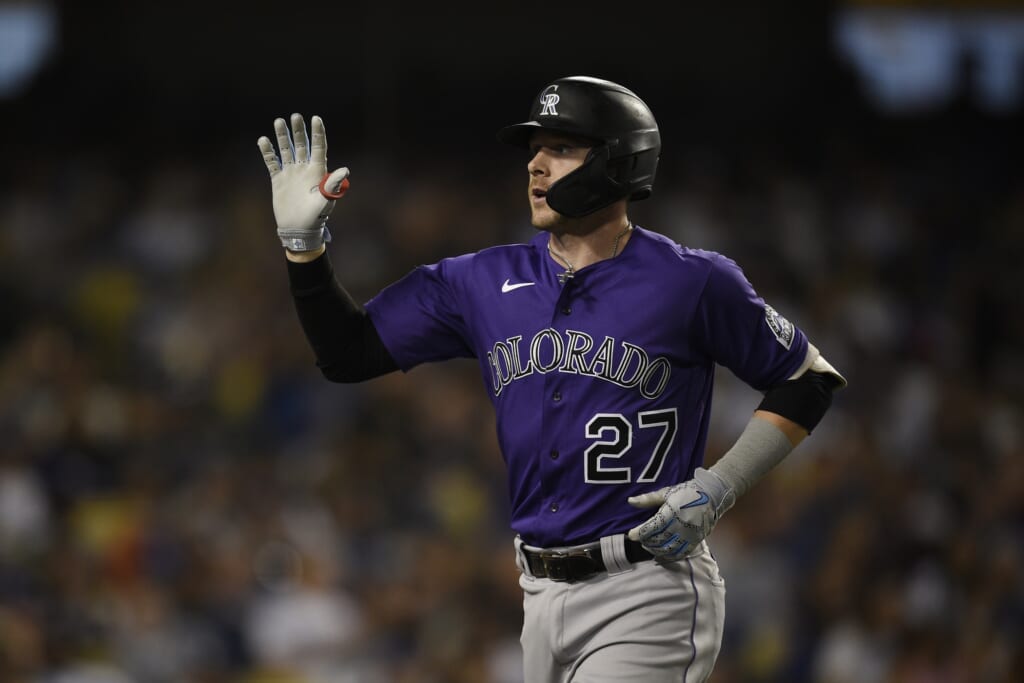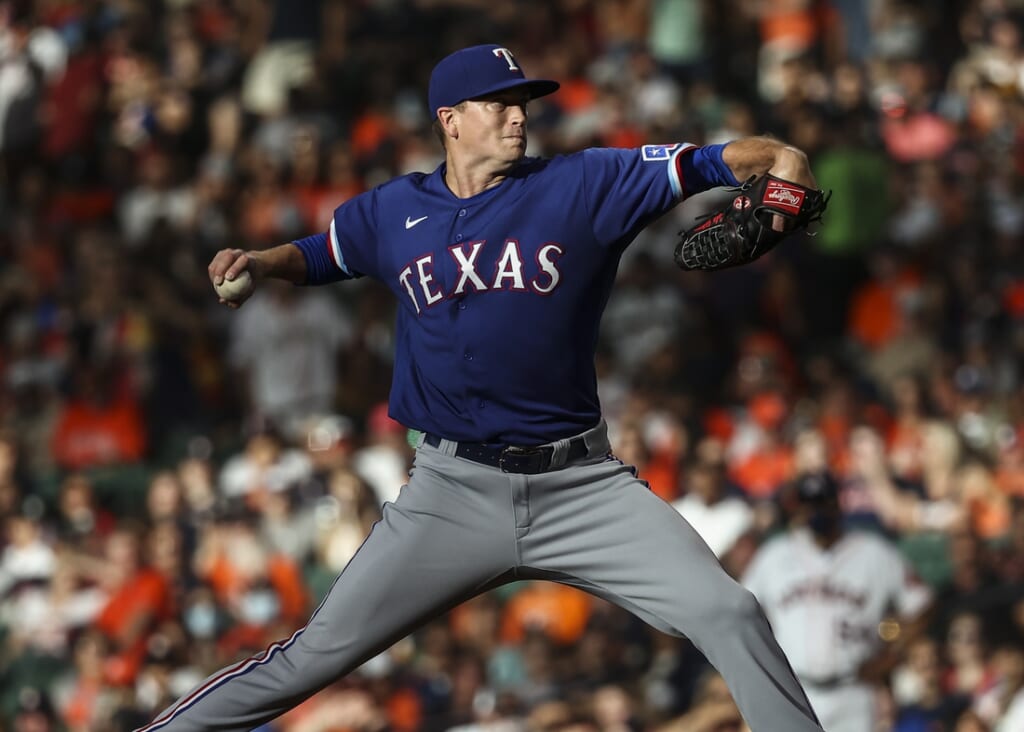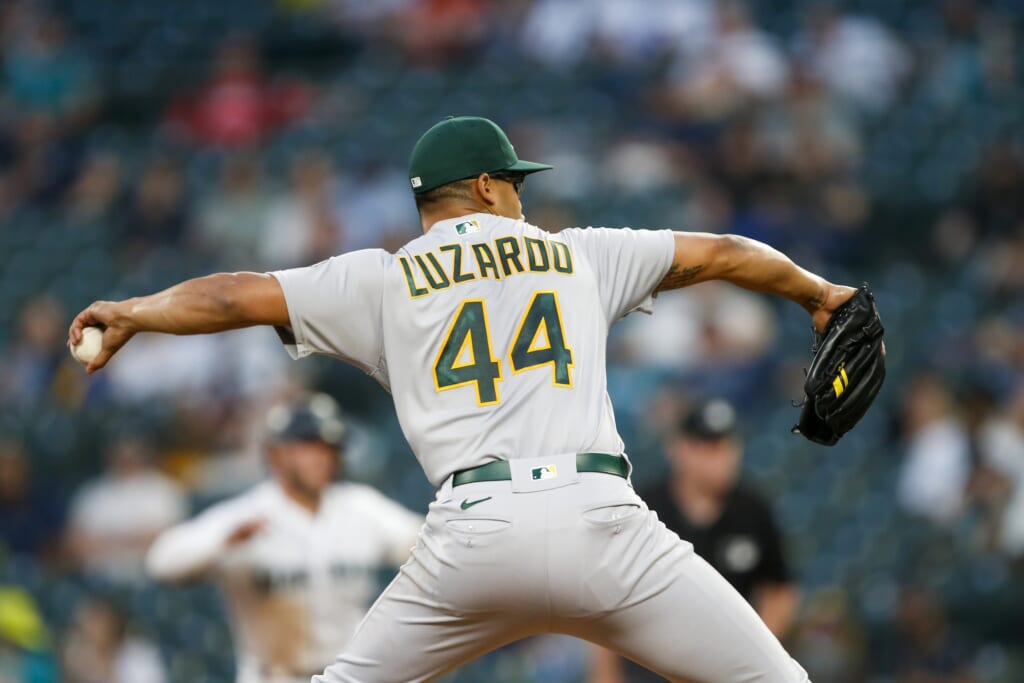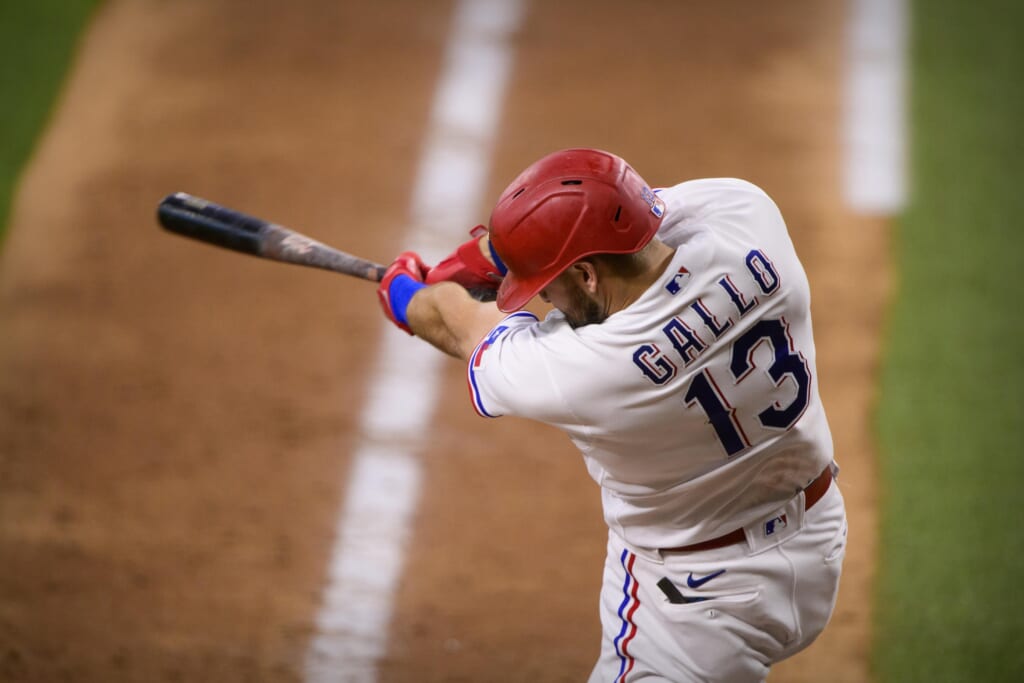
The 2021 MLB trade deadline is in the books and with All-Stars like Joey Gallo, Max Scherzer and Starling Marte traded, there are plenty of winners and losers across Major League Baseball.
While it happened back in May, the Milwaukee Brewers acquisition of Willy Adames will prove to be one of the best in-season moves before the MLB trade deadline. It set the tone for teams in the playoff hunt and while it took until July, we saw clubs react with their own key additions that will impact the MLB postseason.
Let’s examine our winners and losers from the 2021 MLB trade deadline.
Winner: Los Angeles Dodgers
For a brief moment, the Los Angeles Dodgers were losers of the MLB trade deadline. Coming out of July 30 with small additions, all while the San Diego Padres land Max Scherzer, that would be crushing. But a strategic leak may have saved Los Angeles, paving the way for them to land Scherzer and Trea Turner.
Josiah Gray and Keibert Ruiz, one of the top prospects in MLB, are loaded with talent. Trading prospects of their caliber is significant, but this front office can easily afford it. Will Smith blocked Ruiz in the majors and Diego Cartaya is a consensus top-100 prospect. On the pitching side, Ryan Pepiot is really the best arm in the system.
When Clayton Kershaw returns, the Dodgers’ rotation features Scherzer, Kershaw and Buehler. That’s an incredible trio to choose from in a potential NL Wild Card Game and an utterly phenomenal postseason rotation. Oh, the Dodgers will now have an infield with Justin Turner (.879 OPS), Trea Turner (.842 OPS), Corey Seager and Max Muncy (.970 OPS). The icing on top, Los Angeles added Danny Duffy to its bullpen.
Loser: Colorado Rockies

The Colorado Rockies signaled a rebuild this offseason by trading Nolan Arenado. It put German Marquez, Trevor Story and Jon Gray firmly on the trade block. The MLB trade deadline has passed, all three players remain on the roster and interim general manager Bill Schmidt made a great case for why he shouldn’t retain his role.
Trevor Story will decline the qualifying offer, netting the Rockies a compensatory pick. Considering Javier Baez netted Pete Crow-Armstrong and Chicago got a strong return for Kris Bryant, the Rockies did something very wrong.
As for Gray, extending him an $18 million qualifying offer and hoping he pitches effectively is a risk. Even if that happens, he’ll still be a rental this time next year. The icing on the cake, Marquez is the club’s best trade asset and they never even entertained moving him. There’s no justifying this.
Winner: Minnesota Twins
If you’re going to be sellers, go all the way with it. The Minnesota Twins realized midway through a disappointing season that this team needed a reset. So, with key stars declining contract extensions and far too many needs to address, Minnesota took every call at the trade deadline and launched into a rebuild.
It started with Nelson Cruz, the heart of Minnesota’s clubhouse. While dealing him hurts now, landing right-handed pitcher Joe Ryan is huge. He instantly became a top-six prospect in Minnesota’s farm system and he’ll likely join the Twins’ rotation in 2022. Of course, the crown jewel trade, landing Austin Martin and Simeon Woods Richardson for Jose Berrios.
This is how smart front offices execute at the MLB trade deadline. Standing pat, when a team should clearly be a buyer or seller, is the worst thing a general manager can do in July. Conveniently, that’s why the Rockies are also on this list.
Loser: Philadelphia Phillies

Sometimes, a general manager needs to know when to walk away without any harm done. Yes, fans would have been rightfully displeased if Philadelphia didn’t make any significant additions at the trade deadline. But that’s a lot better feeling than what should be experienced right about now.
Kyle Gibson, realistically, is a No. 4 starter. A 2.87 ERA looks great this season, but his 4.46 Skills Independent Earned Run Average (SIERA) is 4.46. For comparison, he owns a 4.39 SIERA and a 4.42 career ERA across 1,267.1 innings. While he is under contract through 2022, regression is coming.

What is the best MLB team of all time?
Making Ian Kennedy a part of the Kyle Gibson trade, which cost the Phillies young pitcher Spencer Howard, doesn’t make this day feel any better in Philadelphia. The 36-year-old has looked sharp closing games for Texas (2.51 ERA, 9.74 K/9) and is a quality reliever. Evaluating him alone, he helps the Phillies’ bullpen.
Gibson and Kennedy are quality additions if the price is right. While Howard struggled in Philadelphia, that’s a reflection on this organization. Howard is gone and the Phillies still aren’t a playoff-caliber team.
Winner: Miami Marlins

The Oakland Athletics paid a justifiable price for Starling Marte. He will thrive in right field defensively and his bat is a huge addition for the lineup. But the best one-for-one swap from the MLB trade deadline saw Miami buy low on Jesús Luzardo, a former top pitching prospect who could thrive with the change of scenery.
Luzardo struggled with confidence and command this season in Oakland. He recorded a 6.87 ERA and posted a 1.63 WHIP with 11 home runs allowed in 38 MLB innings. Things haven’t gotten much better at Triple-A Las Vegas (6.52 ERA, 4.66 BB/9).
Once a consensus top-25 prospect in MLB, Luzardo finds the perfect landing spot. He grew up in South Florida and lands with an organization that does phenomenal work with a fastball-slider combo. He may not reach his ultimate upside, but the Marlins likely landed a mid-rotation starter through 2026 for a rental outfielder.
Loser: New York Mets
Steve Cohen may want to delete his Twitter account. The Mets leaked complaints about the asking prices teams set for starting pitching. On top of that, Cohen went out and tweeted about the importance of waiting until the MLB trade deadline instead of overpaying weeks in advance. He did this to himself.
Javier Baez is an exciting player and there will be plenty of highlights for fans to enjoy. But Baez is also very flawed at the plate. Through 361 plate appearances, the All-Star infielder has a 105 wRC+, .292 OBP and .775 OPS this season. In comparison, Jonathan Villar boasts a 103 wRC+, .319 OBP and .736 OPS. Keep in mind, the Mets gave up top outfield prospect Pete Crow-Armstrong in this deal. Ask fans what happened the last time New York moved its first-round outfielder too early.
That’s not the only issue here. While Carlos Carrasco is back and Jacob deGrom is moving towards a return, there are no safe bets to stay healthy. So, the Mets went out and acquired Rich Hill and Trevor Williams. Hill is a 41-year-old with stuff that rapidly declined after the MLB banned sticky substances and can’t stay healthy. Williams has a 5.06 ERA.
New York might finish the season atop the NL East, but it’s likely headed for a quick exit in October.
Winner: New York Yankees

The New York Yankees finally did it. After a few years of being far too quiet at the MLB trade deadline, general manager Brian Cashman went aggressive. Taking that mentality, with this team’s playoff hopes at stake, was the right call and there’s a lot for fans to get excited about.
There is a lot of focus on Joey Gallo as a three-true outcome player and it’s understandable. When you either homer, walk or strike out in 57.7 percent of plate appearances, the highest mark in MLB, you earn that reputation. But Gallo is so much more than that or his 25 home runs and 55 runs. He leads MLB outfielders in Defensive Runs Saved (14) and ranks second amongst right fielders in FanGraphs’ Defensive Rating (0.7). Gallo is a legitimate Gold Glove defender and while strikeout might frustrate fans, they are worth it for everything else he brings.
As for Anthony Rizzo, he’s a solid addition. New York severely lacked reliable left-handed hitters in its lineup, Rizzo and Gallo address that need. The former All-Star first baseman is patient at the plate (59/36 K/BB ratio) and is reliable with runners in scoring position (108 wRC+). To top it all off, they added Andrew Heaney to the rotation.



